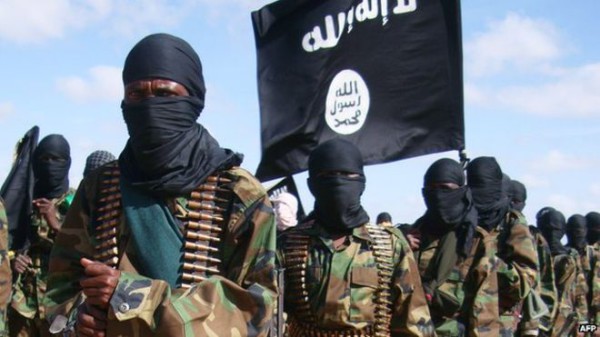
Militants from the Islamist group al-Shabab briefly took over a mosque in northern Kenya, local leaders say.
The jihadists are said to have addressed the congregation for two hours before escaping into a forest.
They criticised Kenyan authorities and warned people not to pass intelligence to the security forces.
The mosque is in Garissa county, 240km (150 miles) from Garissa town, where al-Shabab last month killed at least 148 people at a university.
Police commander Caleb Matoke told The Standard newspaper that 25 fighters were involved. He said he believed they were sent by Mohamed Kuno, the man Kenyan authorities have accused of being behind the Garissa University college attack.
Al-Shabab has been at war with Kenya ever since Kenyan forces entered Somalia in October 2011 in an effort to crush the militants.
It has staged numerous attacks in Kenya. As well as the attack on Garissa university, al-Shabab also attacked a shopping mall in 2013, leaving at least 67 dead. Westgate Mall is due to open again in July.
The BBC’s Abdullahi Abdi in Nairobi says Kenya is building a wall between Somalia and Kenya in an effort to keep out al-Shabab militants but this shows that the militants are active deep inside Kenya.
Who are Somalia’s al-Shabab?
Al-Shabab Islamist militants are battling the UN-backed government in Somalia, and are suspected of links to a string of attacks in neighbouring Kenya.
The group, which is allied to al-Qaeda, has been pushed out of most of the main towns it once controlled, but it remains a potent threat.
Who are al-Shabab?
Al-Shabab means The Youth in Arabic.
It emerged as the radical youth wing of Somalia’s now-defunct Union of Islamic Courts, which controlled Mogadishu in 2006, before being forced out by Ethiopian forces.
There are numerous reports of foreign jihadists going to Somalia to help al-Shabab, from neighbouring countries, as well as the US and Europe.
It is banned as a terrorist group by both the US and the UK and is believed to have between 7,000 and 9,000 fighters.





